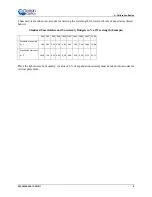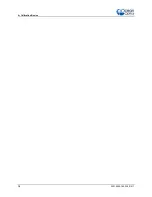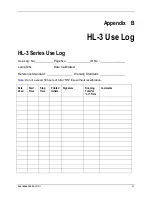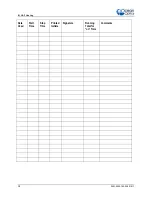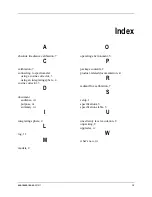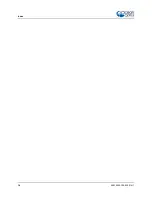
A: Calibration Basics
8
000-10000-190-02-201511
Uncertainty Level Calculation for HL-3
plus
Family
Each realistic measurement has an uncertainty and therefore, a calibration has an uncertainty. The
uncertainty should be validated seriously since this reflects how reliable the calibration is. The following
international standards define the uncertainty and are describing how the uncertainty should be derived:
IEC Guide 115 Application of uncertainty of measurement to conformity assessment activities in
the electrotechnical sector.
JCGM100:2008: GUM 1995 with minor corrections
Ocean Optics calibrations are done in relation to these international standards.
Ocean Optics provides a calibration of the HL-3
plus
-CAL on an absolute irradiance scale in
µW/nm/cm^2. The sources of uncertainties taken into account are listed below in the example. The actual
values are listed in the individual calibration certificate for your light source. The calibration certificate
contains more detailed information.
Sources of Uncertainties
Variable
Source of uncertainty
1.
R
Uncertainty in reproducibility [R], caused by switching on/off
_1.1
S
Stability[S] within 50 hours of operation
2.
T and F
Influence of temperature [T] and humidity [F] in the air. The temperatures during
calibration have a temperature range of 19 °C to 25 °C. The humidity might
influence the calibration in the NIR for wavelength larger than 1100 nm.
3.
d
Uncertainty in mounting distance [d] of the used Cosine Corrector. 1.8 % per 0.1
mm deviation from aperture plane.
4.
ROT
Uncertainty from rotating [ROT] the Cosine Corrector.
5.
D_Lambda
Uncertainty caused by wavelength calibration of the spectrometer which was
used to calibrate the Light source. [D_Lamba[QE]=0,3 nm,
D_Lambda[NirQ512]= 1 nm]
6.
D_AbsIrrad
Uncertainty of the calibration light source used. This is in most cases the Ocean
Optics working standard. See calibration certificate for details.
7.
StrayL
Influence from spectrometers internal stray light which was used to calibrate the
light source.
8.
T_TEC_
Influence of the sensor temperature [TEC] of the spectrometer which was used
to calibrate the light source.
9.
Dark
Influence from uncertainties of the measured dark level of the spectrometer
used to calibrate the light source.
10.
Rep
Reproducibility of the used spectrometer system for calibration.
11.
SP_Lin
Linearity of the spectrometer system which was used to calibrate the light
source.
12.
Bend
Uncertainty caused by bending [Bend] of the fibers.
















